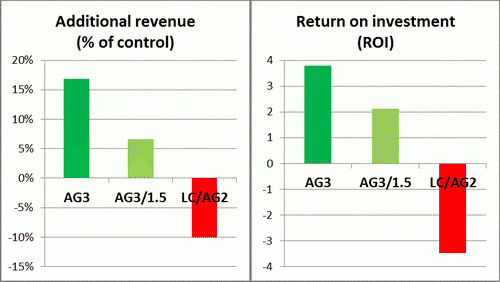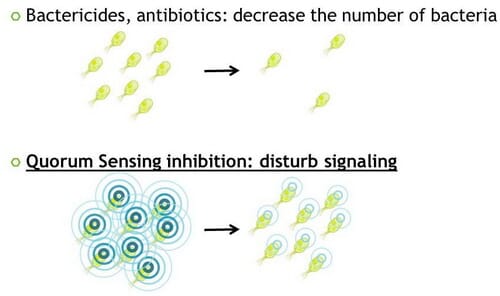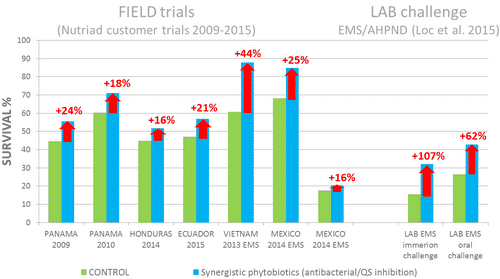Still aquafeed only represents 4-5% of global animal feed production and is fragmented over many species and countries around the globe. This lack of critical mass has limited research developments, particularly for tropical species of fish and shrimp. At the same time, the young aquaculture industry suffers from several bottlenecks which need to be solved to maintain the sustainable growth which is required to satisfy global demand for fish and shrimp in the near future.
These key issues the industry is facing are:
- Strong fluctuations of feed ingredient prices in combination with low market prices for farmed products. This phenomenon has repeatedly affected the profitability of aquaculture operations, including the production of shrimp, marine fish, trout and pangasius. As a result, optimizing cost-efficiency of feed is a major issue for aquaculture producers.
- Formulating feed for carnivorous fish and shrimp with drastically reduced levels of fish meal and fish oil, without affecting performance nor health under production conditions, has proven to be a challenge in the aquaculture species of highest commercial value.
- A wide range of viral, bacterial and parasitic diseases threaten the profitability of major aquacultured species including salmon, trout, shrimp, carp and marine fish.
Solving these bottlenecks requires multi-disciplinary work and combined progress on different areas including breeding programs, vaccine development, farm technology, husbandry, zonal hygiene management, and nutrition.
At Nutriad, we believe that functional feed additives, powered by natural, bio-active compounds with specific functional properties, are increasingly important to support the industry in their many challenges. Functional feed additives that enhance digestive and metabolic processes have shown to be crucial to make novel feed formulations work. Also, a wide range of natural compounds with bactericidal or gut modulating capabilities have shown to be an important component of many disease prevention strategies.
Improving feed cost-efficiency by the application of digestive/metabolic enhancers
A wide variety of concepts and products is being investigated for improving digestion and feed utilization in animal nutrition. Potential products for application in fish include botanical extracts and phytobiotic compounds, short and medium chain fatty acids, organic acids, enzymes, and natural emulsifiers. However, it is difficult to predict the functionality of many of these products for a wide range of fish species, covering carnivorous/omnivorous/herbivorous feeding habits, marine/freshwater habitats, cold/tropical climates, and extremely different feed formulations. At Nutriad, a continuous program of empiric screening for important aquaculture species aims at identifying promising compounds for application in aquaculture.
Our research has mainly focused on compounds which are heat-stable in order to facilitate application under practical processing conditions for aquafeed. In omnivorous fish such as tilapia and catfish, digestive aids have shown interesting results to improve nutrient utilization from cheap ingredients and improve economics of farming and filet processing. For carnivorous fish such as marine fish and trout, digestibility enhancers adjust for decreased digestibility, particularly of dietary fat and energy, for fish fed feeds containing low levels of fish meal and high levels of vegetable proteins.
The optimal application of digestive/metabolic enhancers requires field evaluations to provide information on optimal dosage at different life stages of the fish, possible interactions with feed quality and their effects and processing qualities of the fish. Sampaio-Gonçalves et al. (2012) evaluated the effect of the dosage and feed quality on the efficacy of a digestibility enhancer for tilapia during a production cycle in cages in Brazil. The best results were obtained by supplementing the control feed throughout the production cycle with 3 kg/MT of the feed additive, resulting in improved survival (+2.8%), daily weight gain (+5%), feed conversion (-6.4%), fileting yield (+1.5%), visceral fat deposition (-9.9%), hepatosomatic index (-22%), and viscerosomatic index (-10.7%). Reducing the additive inclusion from 3 to 1.5 kg/MT from 350g fish onwards, still resulted in interesting benefits on growth, feed conversion and visceral fat but did not affect fileting yield. The optimal additive treatment improved farm revenues with 17% compared to the unsupplemented control group and showed a return on investment (ROI) of 3.8:1 (Fig. 1).

Fig. 1: Economic evaluation of different application strategies for a feed additive in tilapia farming. Data show change of farm revenues and return of investment, relative to the non-supplemented control group. Treatment groups differ in inclusion of the feed additive and formulation: AG3 (control feed + 3 kg/MT Aquagest OMF throughout the production cycle), AG3/1.5 (control feed + 3 kg/MT till 350g; followed by 1.5 kg/MT till harvest), LC/AG2 (low cost feed + 2 kg/MT).
The low cost feed performed significantly worse compared to the control feed in most parameters, particularly in terms of survival, feed conversion and fileting yield. The addition of 2 kg/MT of the feed additive was only capable of improving growth but the nutritional impact of reducing the protein digestibility and amino acid balance in this feed heavily affected the overall performance, particularly FCR and survival. This resulted in 10% reduced revenues compared to control and showed the importance of maintaining the nutritional balance in the feed in order to maximize the benefits of a digestibility enhancing concept.
Feed additives with multiple mode of actions are most effective to prevent the new shrimp disease EMS
South East Asia's shrimp production has been ravaged since late 2012 by a new disease known as early mortality syndrome (EMS). The biggest impact was felt in 2013 when Thailand, until then the second largest producer after China, saw its shrimp production drop by more than half in 2013 as a result of EMS. “Early Mortality Syndrome” (EMS), more technically known as acute hepatopancreatic necrosis disease (AHPND), was first reported in China in 2009. It has since spread to Vietnam, Malaysia, Thailand, and Mexico. EMS outbreaks typically occur within the first 30 days after stocking a newly prepared shrimp pond, and mortality can exceed 70%. EMS is caused by specific strains of a relatively common bacterium, Vibrio parahaemolyticus, which are transmitted orally, colonize the shrimp gastrointestinal tract and produce a toxin that causes tissue destruction and dysfunction of the shrimp digestive organ known as the hepatopancreas. The pathogenicity of EMS/AHPND is most likely regulated by a mechanism called quorum sensing, which allows the Vibrio colonies to coordinate the release of the potent toxin.
Functional feeds containing gut health promotors allow to deliver with every meal an adequate concentration of natural antimicrobial activities into the shrimp gut. These feeds are an important component of any strategy to prevent EMS. However, the success of this approach will depend on the efficacy of the selected gut health promotor against the pathogenic bacteria involved in EMS.
Synergistic blends of natural compounds can be selected on their bacteriostatic and bactericidal properties against a specific range of pathogenic bacteria in vitro. In this way, different Vibrio species, including Vibrio parahaemolyticus, appeared to be highly sensitive to a natural feed additive composed of a synergistic blend of antimicrobial compounds.
Recent research is showing that apart from direct bactericide/bacteriostatic effects, selected combinations of antimicrobial compounds are at the basis of more complex mechanisms to steer microbiota composition. Compounds active in Quorum Sensing (QS) disruption are increasingly investigated as potential alternatives to antibiotics due their efficacy at low concentrations and the low chances on bacteria developing resistance against these non-lethal molecules. Quorum Sensing (QS) is a form of bacterial communication, based on the production and secretion of signaling molecules which can be detected by adjacent bacteria. Blocking bacterial communication (called quorum sensing inhibition or also quorum quenching) is a novel way of preventing them to trigger pathogenicity (Fig. 2).
Nutriad research has shown that synergistic blends of natural antimicrobial compounds can function as powerful interrupters of bacterial QS signaling in a typical aquaculture pathogen such as Vibrio harveyi at concentrations well below minimal inhibitory concentrations.

Fig. 2: Quorum sensing inhibition
Natural feed additives combining different action mechanisms against Vibrio species such as direct bactericide/bacteriostatic properties have proven to be effective in improving survival under challenging situations where shrimp are exposed to bacterial pathogens.
The inclusion of such a botanical feed additive in a pelletized feed under standard industrial conditions at the feed mill improved survival under production conditions in different trials in countries affected by non-EMS Vibrio/WSSV as well as countries affected by EMS (Fig. 3). Loc et al. (2015) was able to confirm the effect of synergistic phytobiotics in a controlled challenge trial under laboratory conditions; showing 62-107% increased survival in shrimp that had received the additive during 3 weeks prior to the experimental infection, compared to unsupplemented control groups (Fig. 3).

Fig. 3: Effect of functional feed additives with combined anti-bacterial/QS inhibition action on survival of Penaeus vannamei in various production trials in the field (in the absence or presence of EMS; left) and a controlled infection trial in the lab (right).
Conclusion
Functional feed additives, powered by natural, bio-active compounds with specific functional properties, are capable of improving digestive and metabolic processes in fish and shrimp. Futhermore, synergistic blends of natural compounds with bactericidal or gut modulating capabilities are an important component of disease prevention strategies.

